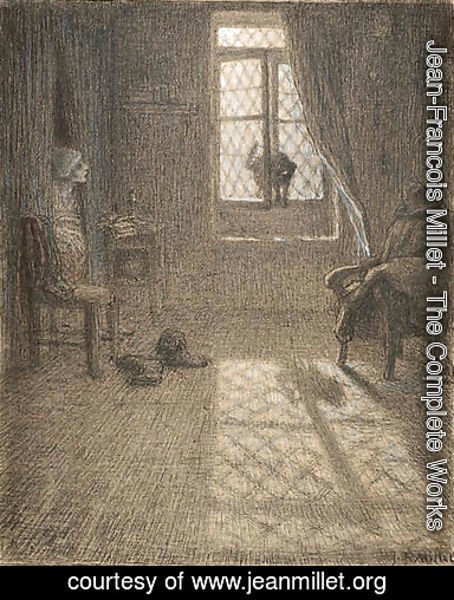'Born to modestly successful Norman peasants, Millet began studying art in Cherbourg at eighteen. In 1837 he received funding to study at the École des Beaux-Arts in Paris. After ten years of mixed success while he supported himself with portraits, The Winnower appeared at the Salon of 1848 and was the first of his peasant pictures to sell. In 1849 he moved to Barbizon in Fontainebleau forest, where he lived for the rest of his life, mostly in grim poverty. There he painted his most famous works, including "The Man with a Hoe."
'Millet portrayed the gravity, hardship, and dignity of common agricultural laborers, but, despite being labeled a "Socialist revolutionary," his viewpoint was less political than fatalistic. Between 1865 and 1869, he produced over one hundred pastels, considered among his finest works. After decades of struggle, he was awarded a medal at the 1867 Exposition Universelle and received the Légion d'Honneur in 1868. Millet's humanity toward peasant life deeply impressed many painters, including Vincent Van Gogh.'
The title of this painting is uncertain to me. I saw it referred to as "The Cat Who Became A Woman", but the Getty labeled it "Le chat" or The Cat at the Window

No comments:
Post a Comment